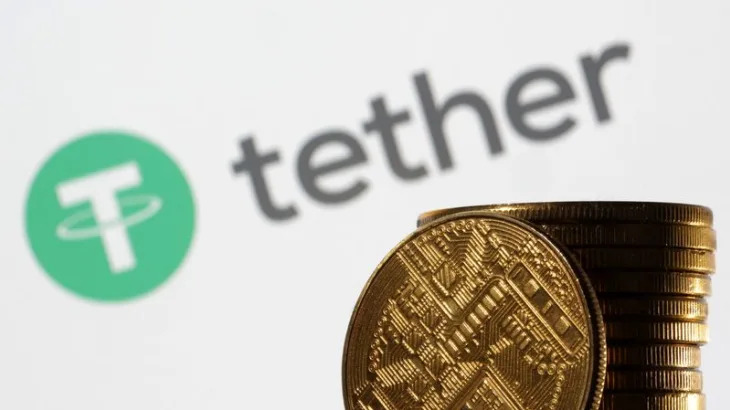There’s no doubt crypto ETFs have made a splash since their U.S. debut earlier this year, with potentially record-breaking growth. In today’s issue, Leo Mindyuk , CEO of ML Tech, looks at the differences between investing in crypto via Separately Managed Accounts (SMAs) and ETFs.
Then, CoinDesk Indices KimGreenberg Klemballa answers questions about SMA ownership and adoption in ‘Ask an Expert.’
- Sarah Morton
You’re reading Crypto for Advisors , CoinDesk’s weekly newsletter that unpacks digital assets for financial advisors. Subscribe here to get it every Thursday.
The Advantages of Actively Managed SMAs over Crypto ETFs for Institutional Investors
Crypto Goes Mainstream
Earlier this year, cryptocurrencies made a great leap toward mainstream adoption as the U.S. Securities and Exchange Commission finally approved trading U.S. exchange-traded funds (ETFs) that track spot bitcoin and ether.
This meant that, for the first time, investors could trade regulated Bitcoin and Ether spot-based instruments on regulated U.S. exchanges. More importantly, it meant that crypto had finally gained the imprimatur of securities regulators and was no longer considered some sort of rogue investment, bought and sold only by technology fanatics.
Crypto SMAs vs ETFs
As a result, millions of novice investors are getting their first taste of crypto by buying bitcoin and ether ETFs. But for more experienced institutional investors, are ETFs the best way to invest?
Separately Managed Accounts, or SMAs offer significant advantages over ETFs for institutional investors to invest in crypto via actively managed accounts.
SMAs’ Benefits Over Crypto ETFs
What Are SMAs?
Crypto SMAs are portfolios of digital assets managed on your behalf by a professional investment manager. This last part – “professional investment manager” – is particularly important with crypto. Crypto is still new, in some ways, crypto doesn't trade in the same ways as stock does. Plus, crypto “fundamentals” don’t refer to earnings and accounting metrics but rather to a whole set of new metrics related to usage, their issuing blockchain, individual activity (which can be seen) of huge holders, and so forth. If you’re investing in crypto, it pays to use an active investment manager who is experienced in crypto.
Direct Ownership: More Control & Tailored Risk Management
Unlike ETFs, SMAs give you direct ownership of your assets, which enables greater portfolio customization to meet your specific risk/return needs goals. That is, SMAs can be custom-tailored by your investment manager to meet your unique requirements – risk tolerance, investment horizon, financial goals and more. Direct ownership also facilitates more transparent and straightforward tax management strategies, such as tax-loss harvesting. Finally, SMAs are custody-agnostic, allowing investors to choose from a wide variety of custodians and venues ranging from Anchorage, BitGo, Coinbase and Kraken.
Diversification
Along with custom-tailoring, actively managed SMAs also enable diversification. If you own a BTC ETF, you track (more or less) the returns of BTC, period. With an actively managed SMA you have access to the entire universe of cryptos (248 cryptos currently listed on Coinbase and 200+ on Kraken) and can diversify your portfolio any way you like.
Additionally, active management allows you to change the allocations. While passive management may be great for some investments, it can lead to very steep losses for crypto. Cryptos often move fast, not a good dynamic for passive strategies.
Outperformance
Active management in SMAs can of course, potentially outperform an underlying coin or coin index. Experienced managers can leverage market analysis, trading strategies and timing to capitalize on market opportunities, which you don’t get with an ETF. And for those investors who are only interested in select coins, SMAs can provide the potential to overlay additional alpha (outperformance) on top of the coin exposure (beta).
24/7 Trading
ETFs trade during normal weekday market hours when the major exchanges are open. The crypto markets operate 24/7. This is a significant difference if you're not a crypto investor. The biggest, of course, is that it eliminates opening gap risk, which, if you’ve traded for any length of time, has probably bitten you at least once. Actively managed SMAs provide your manager the ability to ALWAYS swiftly react to market movements and adjust portfolios accordingly.
What is Right for You?
Crypto ETFs are proving to be very attractive to new crypto investors. Trends indicate, however, that institutions, high-net-worth individuals and registered investment advisors will likely gravitate towards actively managed SMAs over time. The personalized nature, flexibility, and potential for enhanced returns offered by SMAs make them an attractive option for sophisticated investors.
- Leo Mindyuk, CEO, ML Tech
Ask an Expert
Can I tailor a crypto SMA?
As mentioned above, the SMA structure allows for direct ownership of the underlying asset. This means you can tailor crypto SMAs. For example, if your client wants to allocate 50% of a portfolio to bitcoin and 50% to ether, an SMA could be created to obtain this exposure. Crypto SMAs give access to a wide array of assets, meaning you can get exposure to assets outside of bitcoin and ether as well. Multi-asset support provides a deeper level of exposure to crypto. You can potentially have a portfolio of the top 5, 10 or 20 crypto assets. This may enable further diversification and broader exposure to the crypto asset class.
What are the potential tax benefits of an SMA?
An SMA may allow an investor flexibility for tax-loss harvesting, portfolio customization to manage concentrated exposures, and potential tax-advantaged charitable gifting. For further reading on this topic, J.P. Morgan Private Bank has an informative article . This is not to be taken as tax advice. Always consult a tax professional.
How has the SMA market grown over the past few years?
A recent survey has shown that SMAs are gaining favor. Fewer advisors expect to increase their allocations to model portfolios in the year ahead, while advisors plan to increase allocations to SMAs. Through 2023, SMA assets under management have climbed to nearly $2.2 trillion .
- Kim Greenberg Klemballa, head of marketing, CoinDesk Indices





